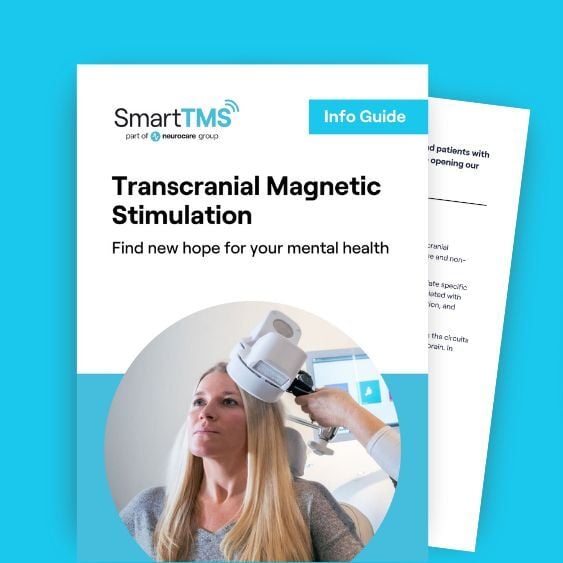Metro: Seasonal Affective Disorder
November 7, 2017 - Smart TMS

Why Winter Makes Me SAD
PR Director Sybil Watson tells Metro about her 30 year struggle with Seasonal Affective Disorder.
Seasonal affective disorder is estimated to affect around 1 in 5 in the UK and generally occurs during the darker months between October and March, peaking in January/February.
Sybil Watson tells her story in the Metro:
“I first started suffering from Seasonal Affective Disorder (SAD) when I moved to Edinburgh for university when I was 19. Until that point, I had been living on the east coast of America where although the winters are harsh, there are still plenty of really bright days. Scotland, however, was a different matter altogether. And in the winter, sometimes it hardly ever gets light. Even on a good day, it could be pitch black by about 3pm.
“My GP at the time suggested, rather helpfully, that I needed to spend time in the south of France sitting on a deck chair, but this wasn’t an easy option for someone who was trying to finish their degree. My family often suggested that I needed some sunshine and I always tried to go on a trip each winter to somewhere warm, but of course that didn’t really fix the problem, and so for the next 10-15 years, I spent winters in a state of depression.
“I knew I was suffering but like most people with depression, it is really difficult to do anything about it and I wasn’t really sure what I could do. My symptoms would usually start in about October, as the nights started to close in, until late February or March, when we start to see a bit more daylight, and at times were quite debilitating. I would lose interest in all the things I usually took pleasure in, withdrew from social situations, had negative thought patterns relating to having no friends, being a bad wife and mother, and feeling incredibly negative. I slept a lot and spent evenings on the sofa hardly speaking, eating the wrong food and feeling increasingly awful. I did a lot of crying, too. My husband and family were at a loss as to how to help me. Again, I would travel to somewhere sunny but that was only ever a temporary solution.
“Spring would come and I would start to feel like myself again. I would have energy, start planning things, inviting people over, meet with friends, go for walks, get out in the garden and feel so so much better. One year, as I started to feel my energy coming back, I said to my husband, ‘wow, I feel like a different person’. His reply was, ‘Oh yes, it is like living with two people: Winter Sybil and Summer Sybil’. It was at this point that I thought I must try to get some help.
“My GP suggested taking antidepressants, but I wasn’t keen on taking pills and dealing with the potential side effects. So I set out to find a local therapist who did CBT, which I understood to be quite effective in treating SAD.
“When I found someone, I went to see her in the spring, when I was feeling good, so that I would have the tools in place to help me when the depression started to kick in. It was hugely practical and helpful and, in my case, had a very positive effect. I do have to make sure I ‘practice’ all the things to keep me on track.
“Some of the tools I use to keep the SAD at bay include using a SAD light, getting outside every day as close to midday as possible even if the weather is bad, and focusing on something each day that I am going to actively enjoy. And so far, it has worked very well. I wouldn’t say I was cured but I am certainly much better. I like the practical aspect of CBT although it does require effort.
“So many people suffer in silence with SAD and aren’t aware of what treatments are available, so the more we can highlight the problem and offer up solutions the better.
“I am also thinking of trying Transcranial Magnetic Stimulation (TMS) – a kind of brain massage using magnetic pulses that aims to treat depression and SAD.
“I am always really open about suffering with SAD in the hope that the more we talk about it, the more people will realise that they can get help. Obviously a lot of people suffer with ‘winter blues’ or say they go into hibernation, but I hope that people who are suffering will realise there are lots of options out there.”
View Article
Read full article: Metro: Seasonal Affective Disorder – why winter makes me SAD
TMS Treatment
rTMS, or Repetitive Transcranial Magnetic Stimulation, is a new form of non-invasive treatment available at Smart TMS. This treatment uses magnetic pulses to stimulate the specific areas of the brain associated with stress and/or depression. It is a non-medication route which has shown remarkable results. TMS is clinically proven and has been approved by NICE for treating depression.
Transcranial Magnetic Stimulation therapy treatment for Seasonal Affective Disorder is available at Smart TMS, based in London and Birmingham. Find out more about rTMS Treatment for Seasonal Affective Disorder.
Smart TMS Clinics
Smart TMS is a specialist provider of TMS treatment, located at clinics in London, Birmingham and Dublin with expansion planned for Manchester and Bristol in 2018.
Repetitive Transcranial Magnetic Stimulation therapy (rTMS) is a technological breakthrough in the treatment of depression with a variety of further potential treatment applications.
Smart TMS is a specialist provider of TMS treatment in London. Repetitive Transcranial Magnetic Stimulation therapy (rTMS) is a technological breakthrough in the treatment of depression with a variety of further potential treatment applications.
Smart TMS is located within The Smart Clinics in South Kensington/Brompton Cross.
CONTACT US
For any other queries or for patients wishing to book an appointment at one of our UK clinics, please contact us:
- Tel: 0345 222 5678
- Email: info@smarttms.co.uk
Irish patients may contact Our Dublin Clinic direct on:
- Email: info@smarttms.ie
- Tel: 353 (01) 254 2514
- Website: www.smarttms.ie










